The Case for Linoleum and Vinyl Floors
While no flooring material is perfect, resilient floors have been a popular choice since the middle of the 19th century, though that popularity waxes and wanes with the times. These days, resilient flooring is enjoying a resurgence. According to the great people at Floor Covering News, it's currently the only flooring category enjoying a growing market share.
Resilient flooring products remain popular, though they may not carry the cachet they once did. For a lot of people, these floors' easy-to-live-with nature makes them the logical choice for house full of kids and or pets. That they can cost significantly less money than the alternatives adds to their popularity.
If you're in the market for a resilient floor, be sure to do your research, find a reputable retailer and ask lots of questions. How long one of these floors will last and wear plays a direct role in how much you'll pay for it.
More flooring guides
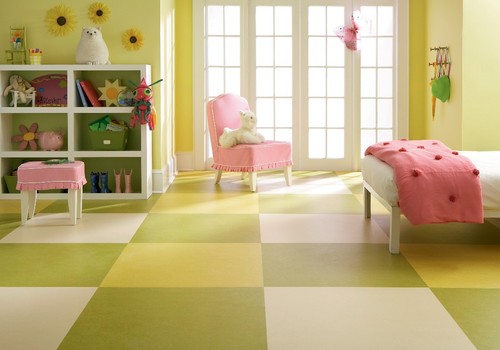
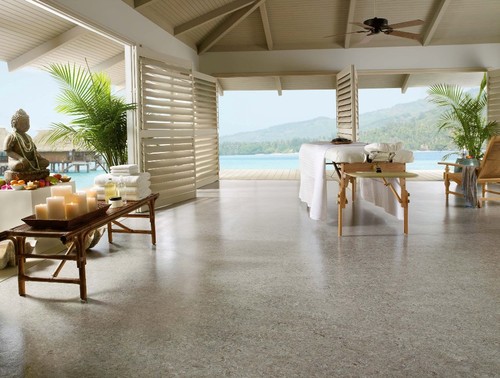
Linoleum is sold in sheets and tiles in a wide variety of colors. Linoleum has to be installed by a professional installer. Almost all applications of this product require sometimes-extensive seams. Its performance over the long term is dependent on the substrate over which it's installed.
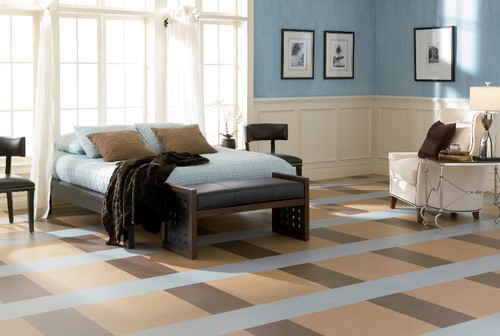
Linoleum is static free (helpful when it comes to cleaning up pet hair) and is purported to be non-allergenic. Take care to clean it with pH neutral cleaners (Fabuloso is one) and it will stay looking beautiful for years and years.
Linoleum
Pros: Wide selection of colors and patterns, environmentally friendly, easy to care for, comfortable underfoot
Cons: Can be expensive to have installed, difficulty finding an installer, water-resistant but not waterproof
Suggested uses: Living rooms, kitchens, hallways, baths, dry basements
Price range: $5 to $8 per square foot
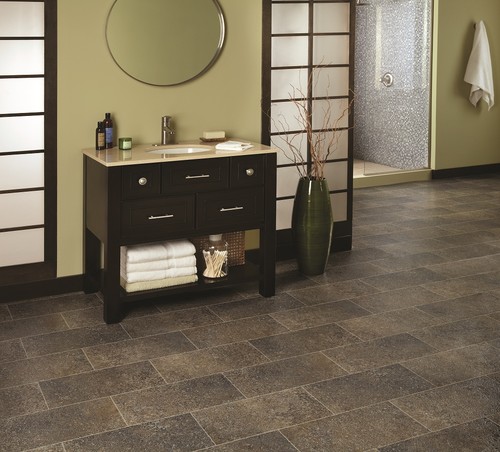
At some point in the 1960s, sheet floors made from vinyl all but replaced linoleum. These vinyl floors took over so thoroughly that vinyl sheet floors too are often called linoleum. They're made completely differently of course, but they behave in somewhat similar ways. Just as is the case with true linoleum, vinyl floors are sold as sheets and as tile, though for home use it's most often seen as a single sheet.
Though vinyl sheet flooring no longer has the prestige it once had, it remains a popular material. In some places it's still the default material for kitchens and baths.
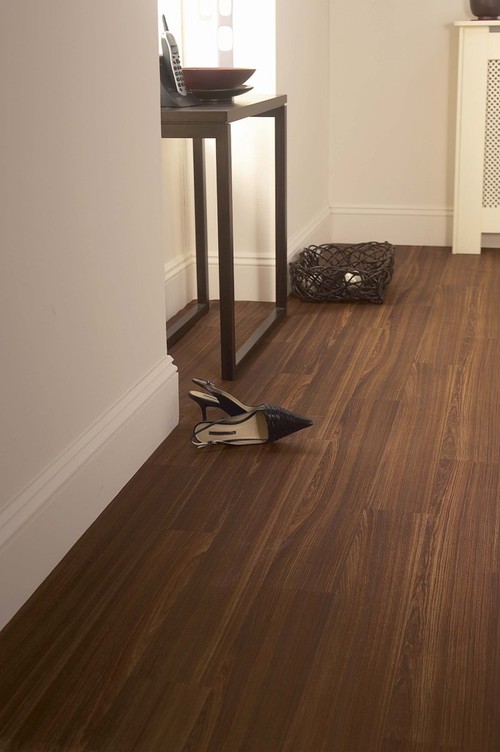
Wenge Bourbon, Cushion Step vinyl sheet flooring by Armstrong - $13.00
The move to vinyl came about for a couple of reasons. For starters, vinyl has greater brightness and translucency and can therefore come in a nearly limitless range of patterns and colors. The surface of vinyl flooring is virtually nonreactive and you can clean it with just about anything and not worry about how it will affect the floor. Its main ingredient, polyvinyl chloride (PVC) is thought to be inert and benign once it's in the home, but its manufacture is problematic from an environmental perspective.
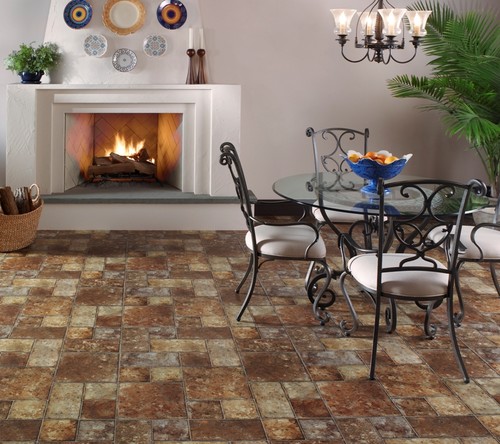
Sobella Omni HD fiberglass core, vinyl sheet flooring from Mannington - $5.00
Vinyl sheet flooring is all but unrecyclable at this point, though technologies on the horizon may change that. More progress is being made with resilient vinyl tile recycling, but again, that's not a material often encountered in homes.
In the industry's defense, they are working on ways to lessen the impact of these products and there are buy-back initiatives available; check into them before you replace a vinyl floor.

Peruvian Slate series vinyl sheet flooring from Armstrong - $13.00
Now with that out of the way, if you're in the market for a sheet vinyl floor, there are a couple of things that should guide your decision. The market's filled with a wide variety of products, and their prices range from a couple of dollars per square foot to more than $20 a square foot.
The first driver of price is the method used to make the pattern in the material itself. Vinyl products that are surface-printed cost less but won't last as long. Inlaid patterns with color extending through the full thickness of the material will last longer. Such materials also cost more as a rule.
The latest development in vinyl resilient flooring is the addition of a fiberglass layer to the core of the material. The fiberglass adds strength and cushion to the floor.
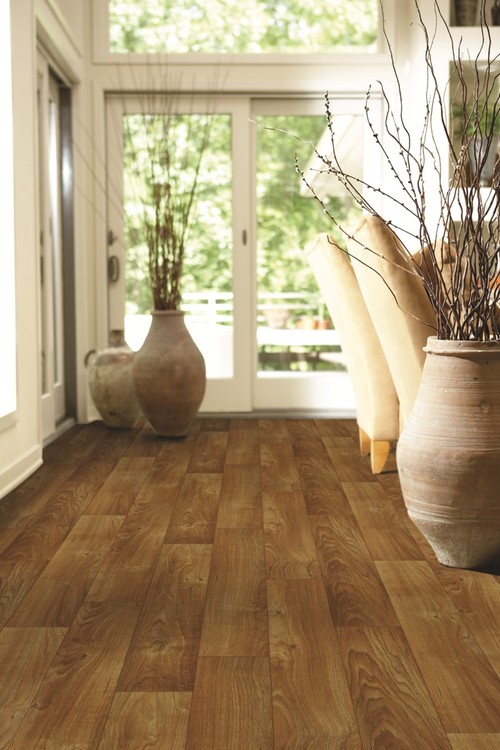
Charter Tawny Oak vinyl sheet flooring from Shaw - $10.50
The composition of the top, or wear layer is also a significant driver of price. As is the case with just about every other product available for your home, quality and price are very closely linked.
The thicker and more tougher that top layer is, the better the quality and the better the manufacturer's warranty. The best products on the market impregnate that wear layer with nylon and aluminum oxide to make it last even longer.
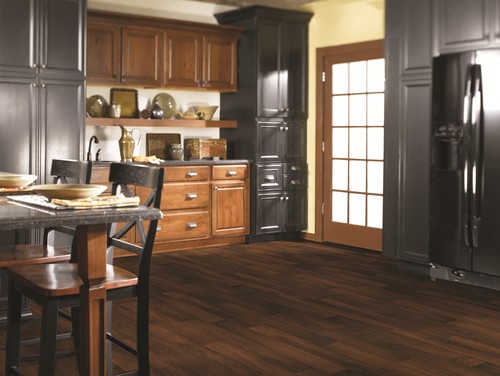
Kent Dark Cherry vinyl sheet flooring from Shaw - $11.00
Beware cheap flooring. Something that costs a dollar a square foot will not last, and you will end up replacing it before too long. Considering the environmental impact of this material, buy it for the long term and get the best quality you can afford.
Just as is the case with every other manufactured flooring material out there, the printing technology used in its manufacture has exploded in recent years, and it's available in just about any pattern you can imagine.
Unlike the linoleum it competes with, vinyl sheet flooring is a much more forgiving material when it comes to installation. With a little preparation and care, many DIYers can tackle a vinyl floor as a weekend project.
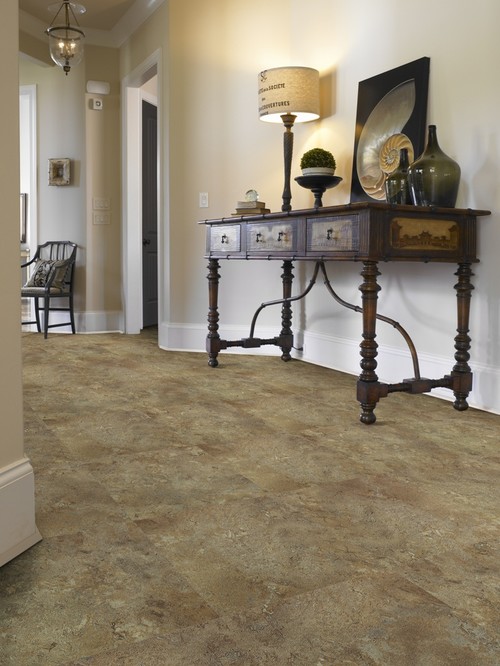
Shaw Sumter Tile vinyl flooring - $2.50
Even though resilient vinyl tile floors aren't often seen in homes, that's beginning to change as you can see here. The appearance of vinyl floor tiles for home use again is no doubt being driven by vinyl tile's smaller impact and ability to be recycled.
When you're researching resilient flooring, weigh your options and consider linoleum. If linoleum isn't for you then find a high-quality vinyl that will last for years. Look for a good warranty from a known manufacturer and buy from a reputable retailer.
Vinyl Flooring
Pros: Long-lasting, relatively easy to install, easy to maintain, comfortable underfoot
Cons: Difficult to recycle, adhesives can off-gas, seams tend to be visible
Suggested uses: Kitchens, bathrooms, basements, family rooms, laundry rooms
Price range: $2 to $20 per square foot